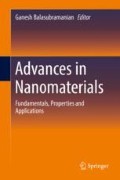Abstract
The intriguing properties of 2D crystals in atomically thin structures such as graphene and MoS2 and their hybrids/composites with other 1D structures (such as nanowires and nanotubes) in recent years have witnessed numerous scientific explorations and technological advancements. The rich physics has demonstrated their potential applications in numerous fields, in particular, in energy storage devices (supercapacitors and batteries) and energy harvesting devices (solar cells). While atomic layers of MoX2, WX2 (with X = S, Se), and number of other 2D materials recently discovered are in very infancy in the post-graphene era, they have shown promising properties along the energy storage and conversion directions. Graphene, however, continues to be the major candidate due to its abundance, economic considerations, and robustness in electronic, thermal, mechanical, chemical, and even biocompatible characteristics. In this review, we present a comprehensive report on the present status and future perspective of two classic candidates of 2D materials family—Graphene and MoS2. Although they share the same van der Waal inter-planar interaction, the atomic symmetry in intrinsic layer makes them very different in nature. We start with fundamentals of energy storage in supercapacitor applications and discuss practical achievements using these novel materials. Edge planes vs. basal plane reactivity and its impact are discussed. Defect incorporation and chemical functionalization with various elemental and functional groups with their impact on energy storage is discussed. The state-of-the-art results in the field are discussed, and finally our perspectives and challenges and opportunities in the field are discussed.
References
Simon P, Gogotsi Y (2008) Materials for electrochemical capacitors. Nat. Mater. 7(11):845–854
Acerce M, Voiry D, Chhowalla M (2015) Metallic 1T phase MoS2 nanosheets as supercapacitor electrode materials. Nat Nanotechnol 10(4):313–318
Xu Y, Lin Z, Zhong X, Huang X, Weiss NO, Huang Y, Duan X (2014) Holey graphene frameworks for highly efficient capacitive energy storage. Nat Commun 5:4554
Zheng C, Zhou X, Cao H, Wang G, Liu Z (2014) Synthesis of porous graphene/activated carbon composite with high packing density and large specific surface area for supercapacitor electrode material. J Power Sources Thrower, Peter A., ed. Chemistry & physics of carbon. Vol. 25. CRC Press, 1996. 258:290–296
Harris P (1997) Chemistry and physics of carbon 13
Suárez D, Menéndez JA, Fuente E, Montes-Morán MA (1999) Contribution of pyrone-type structures to carbon basicity: an ab initio study. Langmuir 15(11):3897–3904
Garten VA, Weiss DE (1957) A new interpretation of the acidic and basic structures in carbons. II. The chromene-carbonium ion couple in carbon. Aust J Chem 10(3):309–328
Montes-moran MA, Menendez JA, Fuente E, Suarez D (1998) Contribution of the basal planes to carbon basicity: an Ab initio study of the H3O+—π interaction in cluster models. J Phys Chem 102(29):5595–5601
Calvo EG, Rey-Raap N, Arenillas A, Menendez JA (2014) The effect of the carbon surface chemistry and electrolyte pH on the energy storage of supercapacitors. RSC Adv 4(61):32398–32404
Wang H, Casalongue HS, Liang Y, Dai H (2010) Ni(OH)2 nanoplates grown on graphene as advanced electrochemical pseudocapacitor materials. J Am Chem Soc 132(21):7472–7477
Peng WC, Bin Wang S, Li XY (2016) Shape-controlled synthesis of one-dimensional α-MnO2 nanocrystals for organic detection and pollutant degradation. Sep Purif Technol 163:15–22
Nagarajan N, Humadi H, Zhitomirsky I (2006) Cathodic electrodeposition of MnOx films for electrochemical supercapacitors. Electrochim Acta 51(15):3039–3045
Jang JH, Kato A, Machida K, Naoi K (2006) Supercapacitor performance of hydrous ruthenium oxide electrodes prepared by electrophoretic deposition. J Electrochem Soc 153(2):A321–A328
Qu QT, Shi Y, Li LL, Guo WL, Wu YP, Zhang HP, Guan SY, Holze R (2009) V2O5·0.6H2O nanoribbons as cathode material for asymmetric supercapacitor in K2SO4 solution. Electrochem Commun 11(6):1325–1328
Sarma B, Ray RS, Mohanty SK, Misra M (2014) Synergistic enhancement in the capacitance of nickel and cobalt based mixed oxide supercapacitor prepared by electrodeposition. Appl Surf Sci 300:29–36
Tang H, Wang J, Yin H, Zhao H, Wang D, Tang Z (2015) Growth of polypyrrole ultrathin films on MoS2 monolayers as high-performance supercapacitor electrodes. Adv Mater 27(6):1117–1123
Author information
Authors and Affiliations
Corresponding author
Editor information
Editors and Affiliations
Rights and permissions
Copyright information
© 2018 Springer International Publishing AG
About this chapter
Cite this chapter
Hu, S., Das, S.R., Monshat, H. (2018). 2D Materials: Applications for Electrochemical Energy Storage Devices. In: Balasubramanian, G. (eds) Advances in Nanomaterials. Springer, Cham. https://doi.org/10.1007/978-3-319-64717-3_3
Download citation
DOI: https://doi.org/10.1007/978-3-319-64717-3_3
Published:
Publisher Name: Springer, Cham
Print ISBN: 978-3-319-64715-9
Online ISBN: 978-3-319-64717-3
eBook Packages: Chemistry and Materials ScienceChemistry and Material Science (R0)

